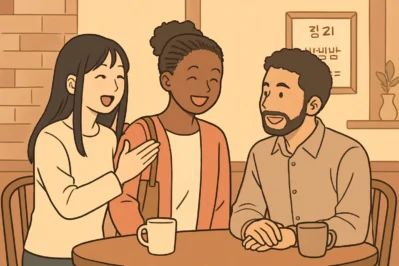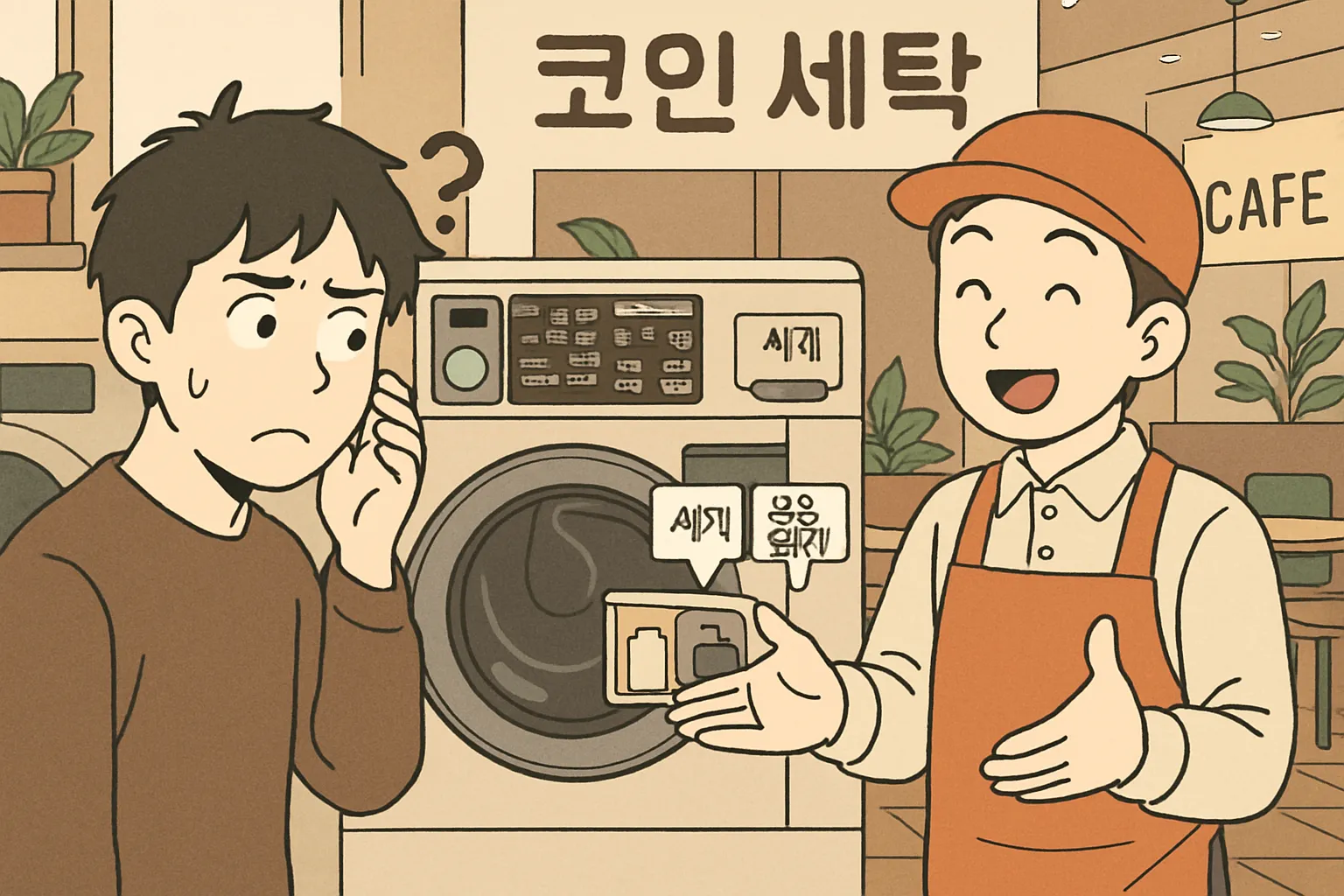Meet My Chingu! How to Introduce Friends in Korean
Hello! This is [Maeil Hangeul], here to upgrade your Korean skills!
Have you ever been in a situation where you wanted to introduce your friend to another friend, but you froze, not knowing what to say in Korean? Don’t worry! Today, we’re going to learn how to introduce people naturally and confidently. Lately in Korea, joining study groups or ‘스터디 (seuteodi)’ for everything from languages to hobbies is a huge trend. So, knowing how to introduce your new study partner is a super useful skill to have. Let’s get started!
Core Expressions You Need to Know
Here are three essential expressions for introducing your study buddy.
1. 이쪽은 제 친구… (This is my friend…)
- Pronunciation [Romanized]: Ijjogeun je chingu…
- English Meaning: This is my friend…
- Detailed Explanation: This is the most standard and polite way to begin an introduction.
이쪽 (ijjok)literally means “this side,” which is a polite way to gesture towards the person you’re introducing.제 (je)is the formal way to say “my,” and친구 (chingu)means “friend.” You follow it up with their name and이에요/예요 (ieyo/yeyo).
2. 우리 같이 한국어 공부해요. (We study Korean together.)
- Pronunciation [Romanized]: Uri gachi hangugeo gongbuhaeyo.
- English Meaning: We study Korean together.
- Detailed Explanation: This is a perfect phrase to explain your relationship!
우리 (uri)means “we,”같이 (gachi)means “together,” and공부해요 (gongbuhaeyo)means “to study.” It’s a simple and clear way to let people know you are study partners.
3. 친하게 지내세요. (I hope you get along well.)
- Pronunciation [Romanized]: Chinhage jinaeseyo.
- English Meaning: Please get along well. / I hope you become good friends.
- Detailed Explanation: This is a warm and friendly phrase to use after you’ve introduced two people. It shows that you want them to form a good connection. It literally means “Please spend time closely.” It’s the perfect way to end an introduction!
Example Dialogue
Let’s see how these expressions work in a real conversation! Imagine you (A) are introducing your new study partner, Lisa (C), to your Korean friend, Minjun (B), at a café.
- A (You): 민준 씨, 안녕하세요! 이쪽은 제 친구, 리사예요.
- (Minjun-ssi, annyeonghaseyo! Ijjogeun je chingu, Lisa-yeyo.)
- (Hi, Minjun! This is my friend, Lisa.)
- B (Minjun): 아, 안녕하세요, 리사 씨. 반갑습니다.
- (A, annyeonghaseyo, Lisa-ssi. Bangapseumnida.)
- (Oh, hello, Lisa. It’s nice to meet you.)
- C (Lisa): 안녕하세요! 저도 반가워요.
- (Annyeonghaseyo! Jeodo bangawoyo.)
- (Hello! It’s nice to meet you, too.)
- A (You): 우리 같이 한국어 공부해요.
- (Uri gachi hangugeo gongbuhaeyo.)
- (We study Korean together.)
- B (Minjun): 와, 정말요? 두 분 다 멋져요!
- (Wa, jeongmallyo? Du bun da meotjyeoyo!)
- (Wow, really? That’s cool of you both!)
- A (You): 하하. 두 사람, 친하게 지내세요!
- (Haha. Du saram, chinhage jinaeseyo!)
- (Haha. You two, please get along well!)
Culture Tip & Trend Deep Dive
In Korea, introducing people well is considered very important. Using the phrase 이쪽은... (This side is…) instead of directly pointing with your finger is a sign of politeness and respect.
Also, the concept of 우리 (uri), meaning “we” or “our,” is extremely important in Korean culture. When you say 우리 같이 한국어 공부해요 (We study Korean together), it creates an instant feeling of connection and teamwork. It emphasizes the group relationship, which is highly valued in Korea. So, when you introduce your study partner this way, it sounds much more natural and friendly to Korean ears than just saying “She is my study partner.” You’ll sound like a real insider!
Let’s Wrap It Up & Practice!
Great job today! You’ve learned how to introduce your friends and study partners like a pro using three key phrases: 이쪽은 제 친구..., 우리 같이..., and 친하게 지내세요.
Now it’s your turn to practice!
- Fill in the blanks: You want to introduce your friend, Maria, to someone.
_______ 제 친구, 마리아예요.
- Make a sentence: How would you say “We watch movies together” in Korean? (Hint: The word for “movie” is
영화 (yeonghwa)and “to watch” is봐요 (bwayo)).
Leave your answers in the comments below! We’d love to see you use the expressions you learned today. Keep up the great work






